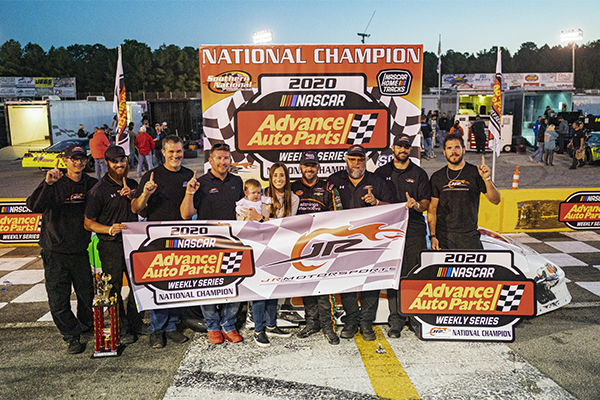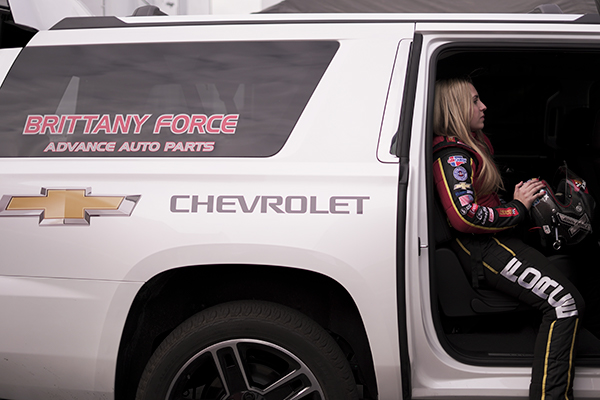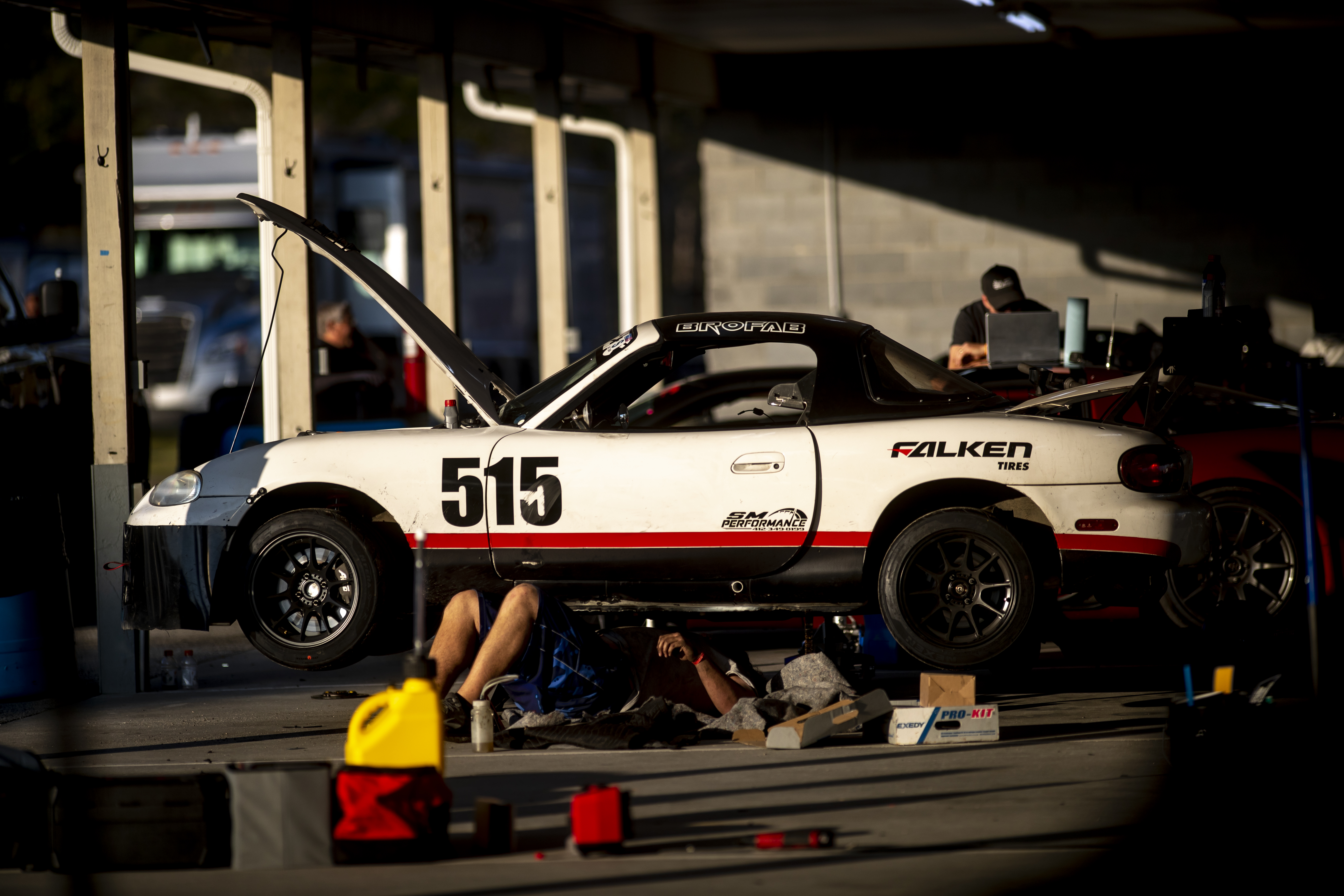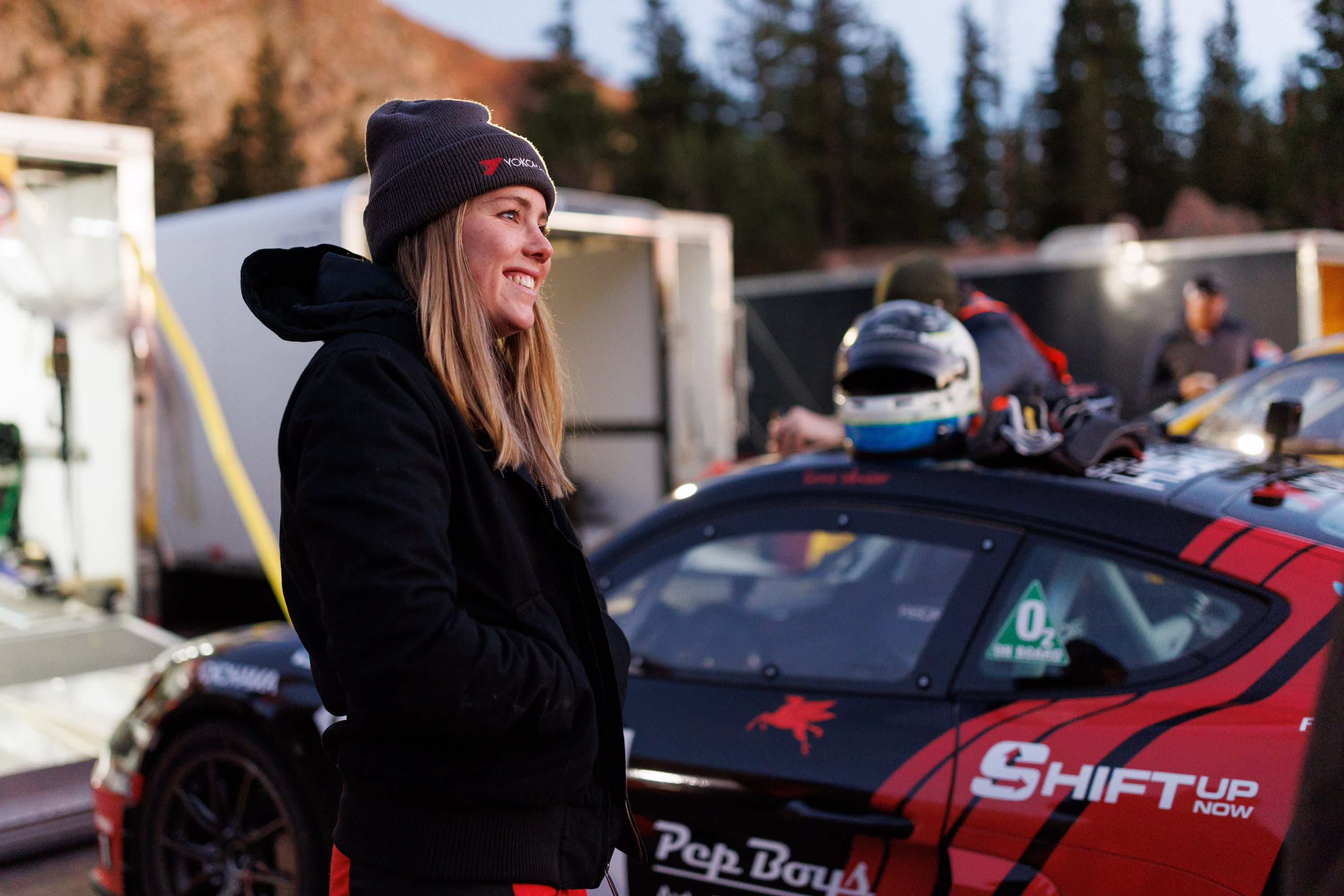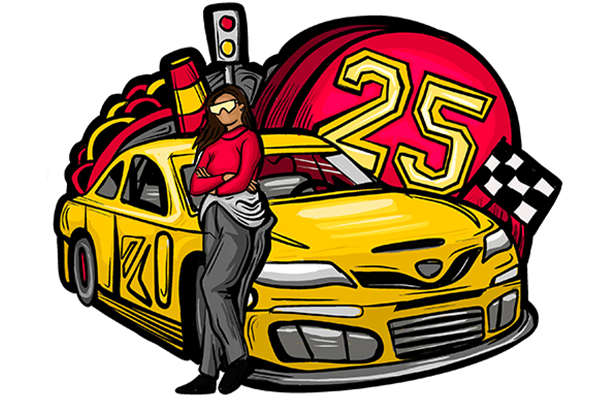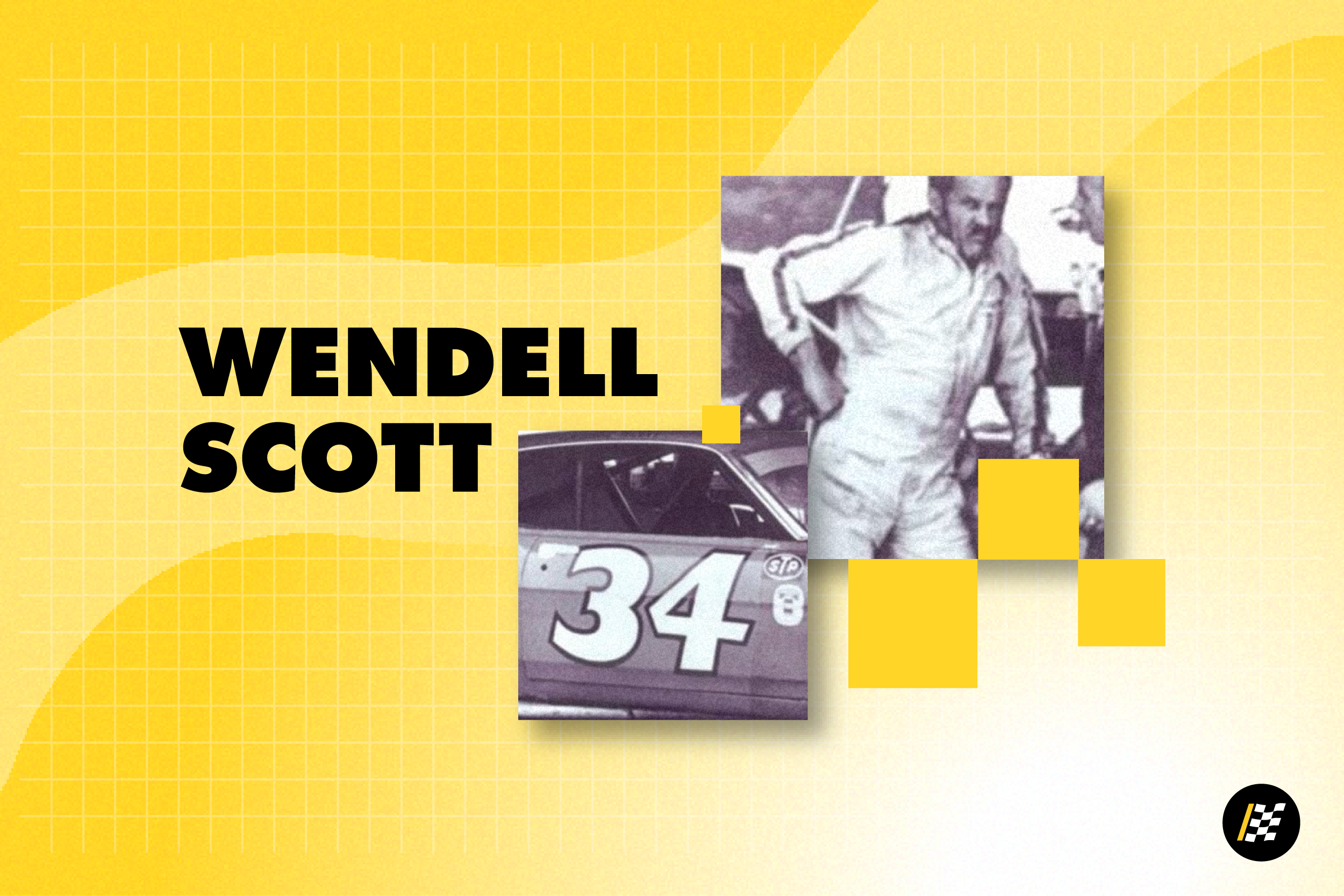
Imagine this help wanted ad: Do you enjoy motorsports (wishing they weren’t so dang expensive!) and love to tinker? Do you get into competition – and yet are the kind of person who will readily reach out a hand to help? Do you appreciate green grass, apple pie and spending time with friends and family? And, oh yes, do you have a good sense of humor and enjoy having fun? If so, we need YOU to race a lawn mower.
We at Advance Auto Parts have been hearing more and more about the grassroots sport of lawn mower racing across the country and we know that many of our readers love to DIY. So we talked to a couple of lawn mower racing diehards and are bringing you the results of our conversations.
Modifying a lawn mower into a racing machine
According to Bruce Kaufman (AKA Mr. Mow-It-All), the president of the U.S. Lawn Mower Racing Association (USLMRA), 90% of racing lawn mowers are crafted in someone’s garage, with that “someone” typically having “mechanical ingenuity.”
If you’re interested in giving this a try and want to race in a USLMRA event, Bruce shares that you’ll find a circus atmosphere with a unique and special subculture focused on camaraderie – thus, the connection with the Grateful Dead.
In preparation, you simply start with a self-propelled rotary or reel-style riding lawn mower that was designed and sold commercially, specifically to mow lawns. However you modify the mower, it must remain suitable for lawn mowing, outside of the exceptions listed in the association’s handbook. Having said that, one requirement for race entry is that cutting blades are completely removed from the mower.
Here are other requirements:
- Non-stock mowers must be equipped with an automatic throttle closing device.
- All mowers must be equipped with an engine safety cut-off switch.
- Mower brakes must be in good condition, operating on at least 2 wheels.
- Fuel must be pump gas. The only additive allowed is STA-BIL Fuel Stabilizer.
Each mower is inspected prior to racing and can be re-inspected at any time. Safety first!
The USLMRA website provides plenty of tips, including this formula:
Small front pulley + large rear pulley = slow!
Large front pulley + small rear pulley = fast!
A tethered kill switch will shut down the engine if you get bucked off, and it needs securely attached to the driver and the mower. The blade deck should remain in place, solidly bolted to hold your weight without swaying. You can install a hand or foot throttle, and most racers replace the front axle with a stronger one. Review the tech section of the site plus the rulebook thoroughly if you decide to give this a go!
Bruce says that there are 11 racing classes and, although none of them permit blades, the resulting racing machines range from “mild to wild.” Typically, modifications are made to carburetors and engines, plus to the chassis. Good brakes are crucial, Bruce says, as is reliable steering. That’s because, as horsepower is added, it also needs controlled on this racing machine that has no suspension. Bruce then mysteriously adds that there are “secret speed tricks that inspectors will never know . . .” Hmmm.
Built for speed
If you’ve never attended a lawn mower race, you might scoff at what you imagine they’d consider “speed.” If so, then you might be shocked to know that even ESPN reported when lawn mowing star Bobby Cleveland broke the speed record by going more than 96 miles per hour! That’s right. Bobby reached an astonishing speed of 96.529 mph on September 25, 2010, beating out the previous record of Don Wales of Britain (who had broken Cleveland’s previous record of 80.792 mph with a speed of 87.833 mph!) and bringing the speed record back to the good ol’ U.S. of A.
https://www.youtube.com/watch?v=ZXAWdeRLsMo#t=99
Not surprisingly, then, Bobby is a proud member of the USLMRA National Lawn Mower Racing Hall of Fame, founded for “Turf Titans who have turned a weekend chore into a competitive sport.” He has clinched more than 75 first place victories and nine STA-BIL Series National Championships. He built the world’s first “Monster Mower” and also holds the world record for monster mower jumping. He has “always loved to ride motorcycles, race lawn mowers, build hot rods and tinker in the garage. His passion for motors and what makes them work runs as deep as his appetite for Southern BBQ, sweet tea and being on the road.”
Broad appeal of the sport
Although it’s the champions who make the headlines, Bruce says that the sport appeals to a wide swath of people, youngsters as well as grandpas, and every age demographic in between. He says that it’s common to see relatives participate in racing together, adding that the “family that mows together, grows together.” Because this activity is more affordable than the typical motorsport, that makes it even more family friendly. More specifically, costs of participating typically run in the $100s to the $1,000s, according to Bruce, not the tens of thousands.
Racers must belong to the USLMRA as well as to a sanctioned affiliated club. Racers can be as young as eight, although all under the age of 18 need parental permission. “Participants run the gamut of socioeconomic classes and geographical boundaries,” Bruce says, with Aaron Crowl (president of the American Racing Mower Association) adding that he and his family have raced against “people getting started in life to people who have retired after a long and successful career, from people who perform manual labor to business executives, doctors and people with Ph.Ds., and from teachers to school principals.” (When Aaron refers to his family, he means his wife and their twin daughters.)
Both Bruce and Aaron compare the racing environment to that of a family reunion complete with camping, camaraderie and food (and, as Aaron points out, “sometimes a weird but lovable person who reminds you of your Uncle Al”). Both men point out that this atmosphere can exist because no one races for a purse, merely for fun, a trophy and some bragging rights. Rivals may challenge you to the nth degree – and yet, when your engine falters, they’ll give you a wrench, a spare part, or even an entire engine.
“If someone came to a race who was TOO competitive,” Bruce muses, “I’d probably say, ‘Dude, you need to do something else.’ Motivation to win is good but, if you’re too serious about winning, you’d tend not to fit in.” To honor people who perform selfless acts in helping others, the racing organization gives out the Spirit and Spark Award.
Another requirement for participation, although an unofficial one, seems to be a love of bad puns. When you attend, you’ll meet people and vehicles with nicknames like Geronimow, Sodzilla and Prograsstinator, with the president of USMLRA being affectionately known as the grasshole.
Despite the sense of silliness that graces the sport, races are nevertheless judged fairly and professionally, with a computer-based scoring system that monitors race times to 1/1,000 of a second, with results posted quickly online, along with season-to-date rankings.
Past to present – to predictions
When asked about the evolution of the sport, Bruce gives a shout-out to STA-BIL Fuel Stabilizer, which he says has nurtured this sport along from its inception (okay, so he actually said they’ve “watered the grass of this sport from the start”). He also shares how he’s seen the technology of racing lawn mowers evolve thanks to the creativity of participants and how the potential of speed has increased with the technological improvements.
Meanwhile, Aaron notes how, early on, racers needed to be especially creative because nobody was making parts specifically for racing mowers. As the sport has grown, though, niche high performance parts have become available, opening the sport to people who couldn’t effectively adapt parts intended for another purpose for their racing machine.
As for the future, Aaron sees super modified mowers becoming increasingly common, those that are lower and wider than previous models, but still recognizable as mowers. “I have mixed emotions about that change, actually,” he admits, “being old school. But you have to be realistic about the future.”
Bruce doesn’t see mowers becoming much faster, believing that current models are at the peak of what can safely be allowed – and both men envision and hope for further expansion of local clubs and community events centering on the quirky yet exciting motorsport of lawn mower racing.
Even if you don’t plan to race, you’ll probably still mow this spring and summer. Find the lawn and garden parts you need online at Advance Auto Parts.

